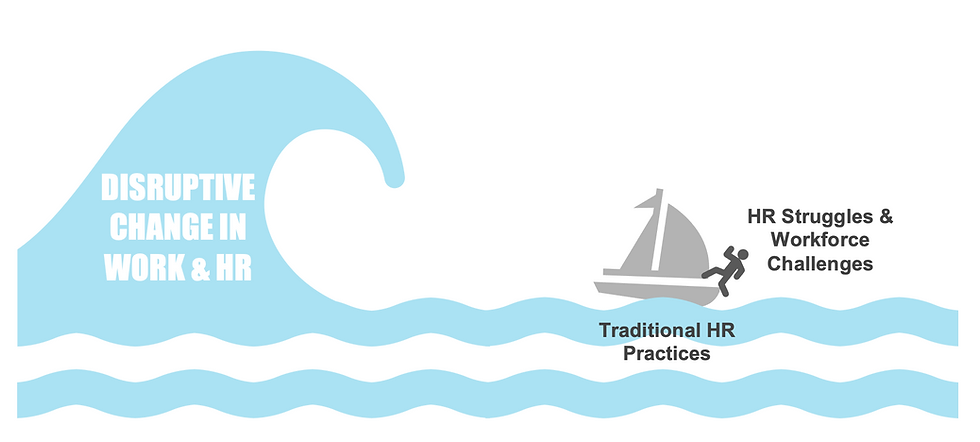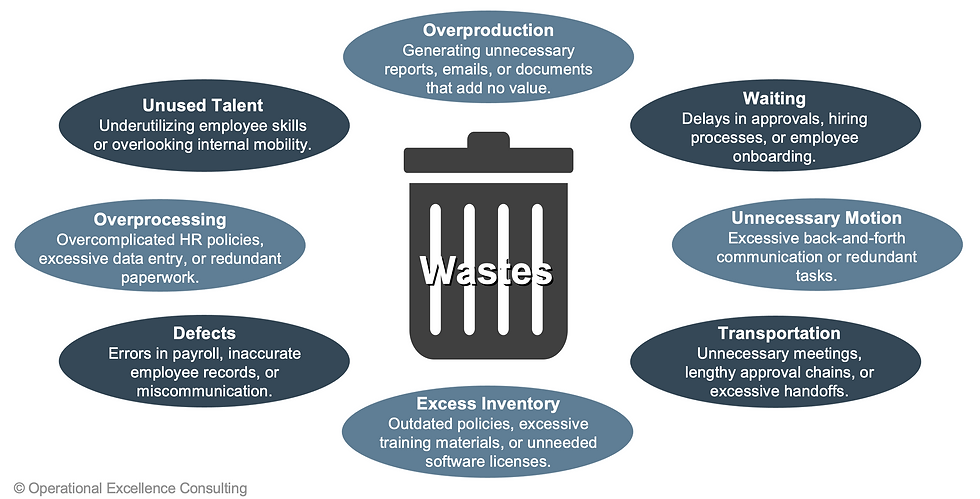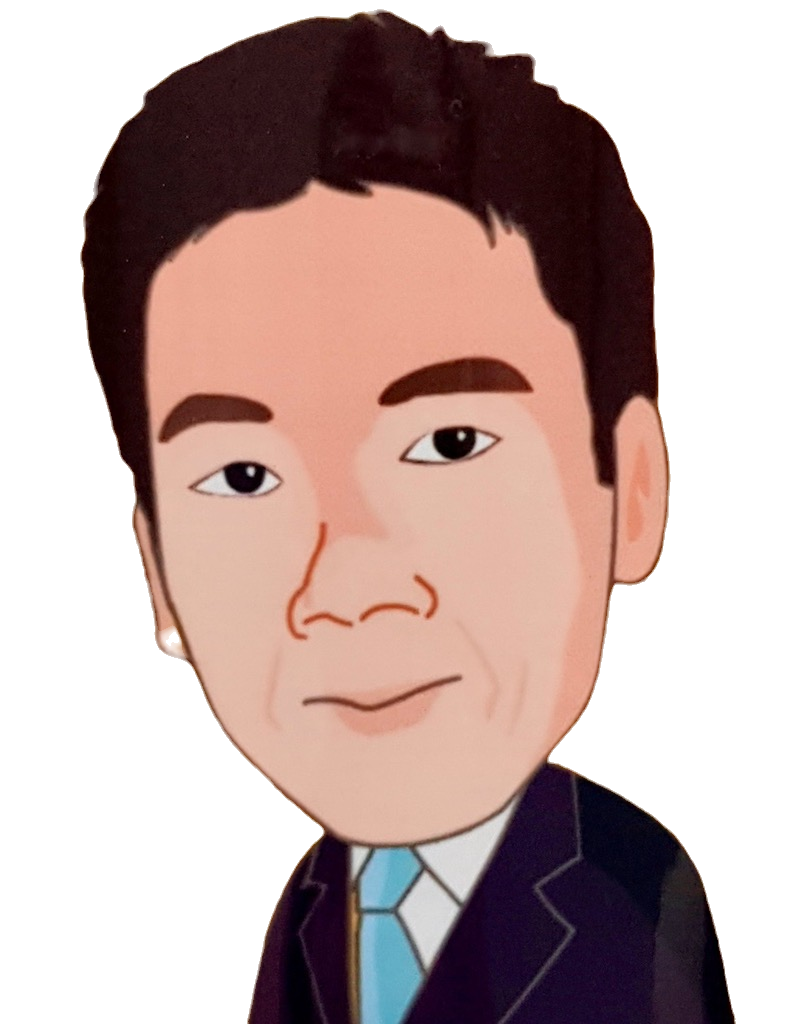The Future of Agile HR: How to Adapt, Innovate, and Thrive in a Changing Workplace
- Allan Ung
- Feb 14
- 4 min read
Updated: Mar 20
Allan Ung

The Death of Traditional HR: Why Change is Urgent
For decades, HR has been seen as a compliance-driven, process-heavy function, bogged down by rigid structures, lengthy hiring cycles, and outdated performance reviews. Traditional HR struggles with slow, bureaucratic processes that fail to adapt to business changes, siloed departments where HR operates in isolation from business strategy, and one-size-fits-all policies that don’t cater to an agile, diverse workforce. Annual performance reviews provide feedback too late to be effective, while rigid hiring frameworks focus on job titles rather than skills and adaptability.
In today’s fast-moving, digital-first economy, businesses need an HR function that is adaptive, data-driven, and employee-centric—not stuck in the past. Enter Agile HR.

What is Agile HR? The Shift from Process to People
Agile HR is a mindset shift that transforms HR from a rigid, rule-based function into an adaptive, people-first enabler of business agility. Instead of long cycles and strict policies, Agile HR operates with flexibility, continuous feedback, and iterative improvements.
At its core, Agile HR is about continuous adaptation, where HR strategies evolve based on real-time business and employee needs. It places employee experience at the center, focusing on engagement and well-being rather than just enforcing policies. Agile HR also fosters cross-functional collaboration, breaking down silos between HR, leadership, and business teams to create more integrated talent strategies. Additionally, HR decisions are now data-driven, leveraging real-time analytics instead of relying on outdated reports or intuition.

Key Frameworks That Drive Agile HR Success
To implement Agile HR effectively, organizations rely on proven frameworks that help streamline processes and enhance workforce agility.
🔹 Design Thinking in HR places employees at the center of HR problem-solving by using the Empathize → Define → Ideate → Prototype → Test framework to drive HR innovation.

🔹 Lean HR & Kanban help eliminate waste by cutting down on unnecessary paperwork, inefficient processes, and excessive administrative burdens. Kanban boards visualize HR tasks, ensuring workflow efficiency.

🔹 OKRs (Objectives & Key Results) replace static annual goals with flexible, adaptable objectives that align employee performance with business agility.

Agile Workforce Planning: Building a Future-Ready Organization
Agile workforce planning ensures that organizations can anticipate workforce needs, adjust to market disruptions, and align talent strategies with business growth. Unlike traditional models that rely on fixed workforce projections, Agile workforce planning is dynamic, data-driven, and scenario-based.
To achieve this, organizations differentiate between Strategic Workforce Planning—which focuses on long-term talent forecasting and alignment with business growth—and Operational Workforce Planning, which manages immediate staffing and hiring needs. By combining both, businesses maintain agility while ensuring day-to-day operations run smoothly.
Data-driven decision-making is also a key element of Agile workforce planning. AI-powered analytics help HR leaders predict hiring trends, turnover risks, and skill gaps, enabling more proactive talent strategies. Additionally, scenario planning prepares HR teams for economic shifts, industry disruptions, and workforce transformations, allowing businesses to react quickly to unforeseen challenges.
Agile Talent Acquisition: Hiring for Adaptability & Skills
Traditional hiring focuses on rigid job descriptions and lengthy interview cycles, often failing to attract adaptable, forward-thinking talent. Agile talent acquisition flips the script, emphasizing skills over job titles, iterative hiring processes, and a candidate-centric experience.
Rather than hiring based solely on predefined roles, Agile HR prioritizes transferable skills and adaptability—key qualities for thriving in a rapidly changing business landscape. Iterative hiring processes allow for quick decision-making and adjustments, ensuring companies secure top talent without unnecessary delays. Moreover, a transparent, engaging candidate experience keeps applicants motivated, leading to higher acceptance rates and stronger employer branding.

Agile Performance Management: From Annual Reviews to Continuous Growth
Traditional performance reviews are inefficient, demotivating, and reactive, often failing to provide employees with meaningful feedback. Agile performance management shifts to a continuous feedback model, ensuring employees receive timely, constructive input that drives performance and engagement.
Instead of static annual goals, Agile HR embraces OKRs (Objectives & Key Results), which allow employees to adjust their objectives based on changing business needs. By focusing on employee growth, skill-building, and empowerment, organizations create a high-performance culture that values learning and continuous improvement.
The Future of Agile HR & Workforce Planning: What’s Next?
As HR continues to evolve, three key trends will define the future of Agile HR:
1️⃣ AI & Automation in HR – AI-driven recruitment, predictive workforce analytics, and smart HR chatbots will streamline operations and enhance decision-making.
2️⃣ The Rise of Hybrid & Remote Work Models – Agile HR must support flexible work environments with virtual collaboration tools and asynchronous workflows.
3️⃣ Continuous Agility in HR Strategies – The ability to iterate, pivot, and innovate will become essential as businesses face rapid technological and market changes.
Conclusion: The Time for Agile HR is Now
Agile HR is not just a trend—it’s the future of workforce management. In an era of constant change, rigid policies and outdated processes no longer serve businesses or employees. By embracing Agile HR principles, data-driven decision-making, and workforce flexibility, organizations can stay competitive, attract top talent, and foster innovation.
The shift to Agile HR starts with small but impactful changes—continuous feedback over annual reviews, hiring for adaptability rather than rigid job titles, and workforce planning that evolves with business needs. HR is no longer just an administrative function—it’s a strategic driver of business agility.

Article by Allan Ung, Principal Consultant at Operational Excellence Consulting, a distinguished management consultancy based in Singapore. Our firm specializes in maximizing customer value and minimizing waste through the strategic adoption of Design Thinking and Lean management practices. For further details, please visit www.oeconsulting.com.sg













This was a thoughtful read on Agile HR and how it's transforming workforce planning. It reminded me how essential aligning team goals is with broader business strategies. Using OKR project management in such agile environments can really help bridge the gap between daily tasks and long-term vision. It brings structure without losing flexibility. Especially for HR teams navigating future workforce demands, OKRs can be a solid anchor. Thanks for sharing such relevant insights in today's changing work landscape!